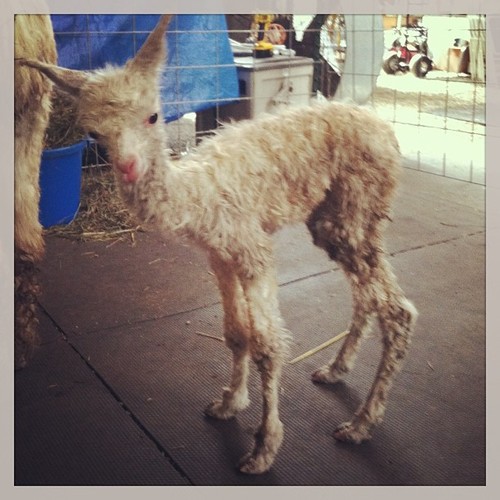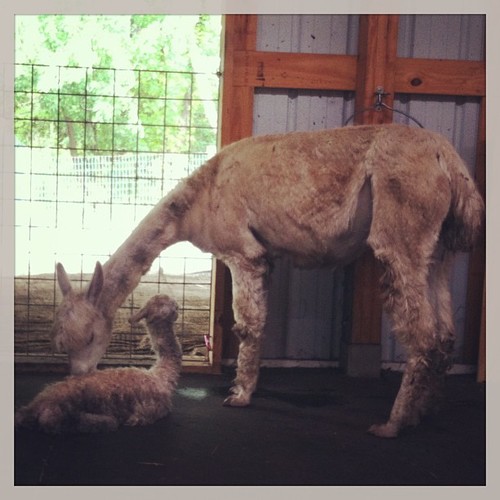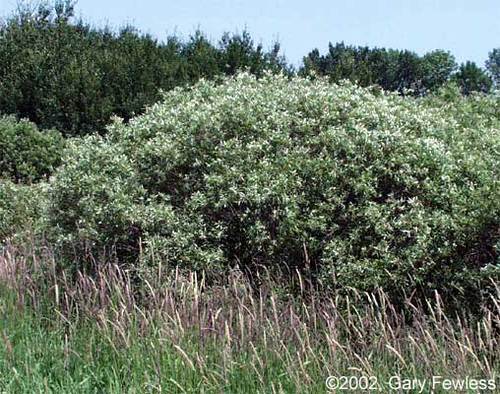|
Please help us welcome our newest alpaca, RDA's Slender Willow (Salix petiolaris) aka "Willow"! If you are wondering what this crazy name is all about you can read about our alpaca naming theme here. Willow was born on October 5, 2013 and is Shimmer's 7th cria. Shimmer is such a good mom too and Missy didn't even have to milk her! Finally, a trouble-free birth (Missy had to milk and bottle feed for the last two cria births on the farm). Willow is white and has the cutest furry feet, and she has really long legs which is why we picked the "slender willow" for her name. She is very alert and spunky and has been practicing "running" in the stall. Shimmer is ready to go outside and we can't wait to see Willow in the pasture with Summer and Pip. (We keep the new mom and cria in a stall for the first 24 hours to make sure the cria is eating and pooping before turning them out in the pasture). The slender willow (Salix petiolaris), also known as the meadow willow, is a threatened species in Ohio. You can see the complete list of rare plants in Ohio here. Like other willows (Salicaceae family), the slender willow grows in wet areas, including wet meadows, low prairies, swamps, marshes, and lake and stream shorelines. The slender willow is native to the lower 48 states of the U.S. and throughout Canada. The *specific epithet of the slender willow, petiolaris, is named after its petioles which are long compared to other willows. Petioles are the stalk that joins a leaf to the stem of a plant. The genus, Salix, comes from from the Latin word for "jump" which is a reference to the rapid growth of willows in general. Many willows have a bitter tasting bark that contains derivatives of salicylic acid which is the primary compound in aspirin and many topical acne treatments. Willows are important for stabilizing the banks of streams and shorelines of lakes and ponds and providing in-stream shade for fish such as trout. Willows also provide food for a variety of wildlife including rabbits and deer that graze on the leaves, a secondary food source for beaver, and an important food source for birds that eat the buds in winter. The slender willow also plays an important role in pollination and bee populations because it attracts large numbers of native bees. You can find more information on identifying characteristics of the slender willow here. * A scientific name is composed of two parts: the genus and specific epithetic. In the slender willow, Salix is the genus and petiolaris is the specific epithet. A genus is a taxonomic category of species that are structured similarly or phylogenetically related. The specific epithet then distinguishes an individual species within a genus.
0 Comments
Your comment will be posted after it is approved.
Leave a Reply. |




 RSS Feed
RSS Feed
